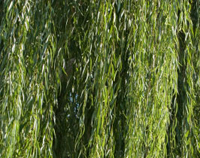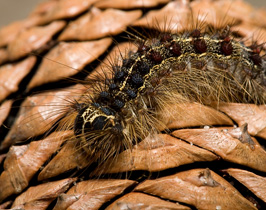Willow Tree
Willow Tree Care, Pruning & Disease Prevention Tips
The majestic, graceful willow tree is often found by a pond, stream or other body of water. While it prefers moist soil, weeping willows can do well in drier areas as long as they are watered regularly. Willow trees require a lot of room due to their size, which includes a massive root system and sweeping round crown. This deciduous tree has green, narrow leaves and yellow flowers that bloom April-May. Willows are fast growing trees that add drama and shade to a large landscape.
The best time to plant a willow tree is from the end of January to the middle of March. Willow trees grow best in full sun.
| Size of Tree: | Willow trees are 34-45 feet high and wide and grow 8-10 feet per year |
|---|
Willow Tree Care

Willow trees are low maintenance. Prune to maintain tree health and desired shape, and fertilize as needed.
Newly planted trees benefit from ArborKelp®, SavATree’s exclusive seaweed biostimulant which aids in tree establishment, promotes root growth and heightens stress tolerance.
Mature and established trees benefit from fertilizer feedings of organic-based macro and micronutrients for the nutrition necessary to sustain their health.
Willow Tree Pruning
A young tree should be pruned to develop a strong central leader. Once the tree matures its drooping fronds can touch the ground and can be pruned to allow a clearing under the tree if desired. Dead or broken branches are removed during pruning. Willow tree pruning helps promote healthy growth and balance the wood of this soft wood tree. Any suckers, growing from soil floor to trunk, stress the tree and need to be removed.
Your SavATree certified arborist is equipped with the latest techniques and state-of-the-art equipment to keep your willow trees healthy, beautiful and safe. Contact us today for information on pruning or any of our other willow tree care services.

Willow Tree Diseases and Pests
Gypsy Moth – Gypsy moth caterpillars can be found feeding on willow trees from late May until early July. They can defoliate the tree, making the tree weak and susceptible to other pests and diseases. Learn more about the gypsy moth.
Crown Gall – Willow trees are at risk for crown gall, a bacterium that causes galls to form on the roots and stems. Numerous galls can cause stunting, discoloration and dieback. Crown gall can also make the tree susceptible to secondary diseases that enter decaying galls.
Willow Scab – This fungus can attack and kill young leaves and branches within a very short time. Signs of willow scab include olive green spore masses along the veins on the underside of leaves. Willow scab often occurs with black canker.
Black Canker – Willow trees that are infected with willow scab will often also have black canker. Black canker causes dark brown spots on the tree’s leaves. Black bordered gray-white lesions appear on the stems and twigs. When trees are infected with both willow scab and black canker, they are said to have willow blight, which can cause defoliation, significant dieback and tree death.
Bagworm – Bagworm is a type of moth whose caterpillars feed voraciously on willow tree leaves and twigs. Signs of bagworm include defoliation and characteristic 2″ long bags of tough silk that hang like an ornaments from the willow tree’s branches. A bagworm infestation can cause severe defoliation which can retard the growth of the tree and make the tree vulnerable to secondary pests.
Willow Leaf Beetle – Willow leaf beetle larvae and adults feed on the willow’s leaves often to the point of skeletonization. Signs of a willow leaf beetle infestation include defoliation, brown crumbling leaves and metallic, greenish-blue oval beetles, less than 1/5″ long, feeding in clusters from late May throughout the growing season. In late spring, black larvae can be spotted on leaves.
Don’t let these diseases or pests destroy your precious willow trees. If you suspect a problem with your trees, call a SavATree certified arborist right away for an evaluation and treatment options. Our willow tree care experts can help protect your trees and keep your landscape beautiful.





